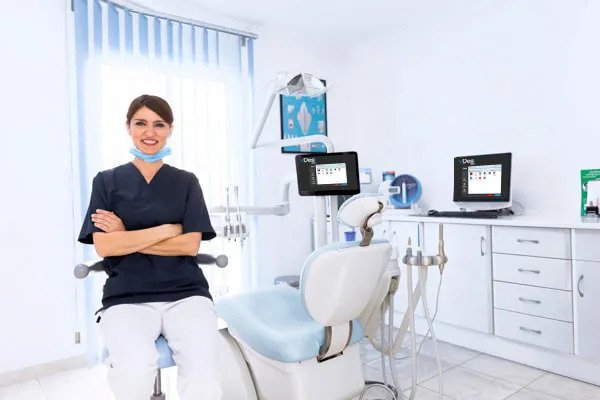If you think of one industry that has been hit the hardest by COVID-19, it is almost certain that Healthcare will come into your mind straightaway. In a country like the USA, where every 8th citizen is employed by the healthcare industry, 10 million people filing for unemployment insurance is a serious concern. In fact, this March 21st, the second-largest claim for unemployment insurance in all of Michigan was from the healthcare industry, trailing only the restaurant and bar business.

One of the biggest reasons for businesses and industries turning towards desktop virtualization is VDI’s power of cost-cutting. While the traditional IT infrastructure demands a lot of maintenance and costly upgradations, VDI offers cost reduction via various capabilities. VDI allows the healthcare industry to implement the BYOD work culture, which decreases various IT expenses such as management, infrastructure, and maintenance.
Talking about the security perspective, VDI enables healthcare organizations to decrease unauthorized access risks as it hosts all the medical data in a centralized data center. These isolated data centers are only accessible via connected virtual desktops. This way, only the screen image of the data is sent to the endpoint client, not the complete raw data, which eliminates any kind of data theft risks.
VDI in Healthcare: Challenges Post COVID-19
VDI or Desktop Virtualization is here to stay. Although many healthcare organizations had to implement VDI in a hurry, the long term application of VDI demands a strategic and intelligent approach. But like any other technology, it is easier said than done. Here are some of the challenges the healthcare industry would face post COVID-19 in VDI implementation:
1. Integrating VDI with the Existing Infrastructure
One of the biggest challenges would be to integrate VDI into the existing IT infrastructure. Simply just discarding the previous, applied IT infrastructure and adopting VDI overnight is not a feasible option, especially when you have lives to save on a daily basis.
Steadily the healthcare industry would have to integrate VDI solutions into the existing system. All the software and apps have to be tried and tested before making them the new normal in the organization.
2. Deciding the Bandwidth and Storage Needed
This could be a little tricky because going wrong here would mean added expenses later. VDI infrastructure is all about its centralized storage and processing power.
Healthcare is a fast-paced and intense industry that needs quick and fast, accurate results. Latency is not an option in healthcare-related IT infrastructure. In addition, when the number of active users increases, the centralized processing functionality has to be nothing but the fastest.
Also, with data and medical records being entered and retrieved from the database every few seconds, the storage capabilities have to be given special attention while implementing a trouble-free VDI infrastructure.
3. Choosing Between Persistent and Non-Persistent VDI
Persistent VDI’s will definitely save individual choices and preferences for each and every connected user but will require added resources and expenditures.
On the other hand, Non-persistent VDIs will cost less and won’t require special resources but will not save individual preferences. This choice is very crucial and should depend upon the requirements of the healthcare organizations.
VDI in Healthcare Industry: Benefits Post COVID-19
Implementing VDI post COVID-19 will not be easy. But is that hassle worth the results? Undoubtedly yes! The healthcare industry has an ocean of benefits to take from the power of VDI in healthcare. Desktop virtualization in healthcare will not only make things easier for the on-field, ground healthcare workers but will prove to be a game changer for the admins and managers as well.
Here are the top benefits of VDI for healthcare industry post COVID-19:
1. Enhanced Healthcare and Clinical Efficiency
Healthcare professionals will be able to work more on the grass root levels without worrying about the administrative and device management hassle. Also, the devices would empower them to improve their efficiency as there would be no loss of data, as well as there will be zero downtimes with VDI in healthcare.
Doctors and healthcare activists would easily access medical records and data via any mobile phone or even a small handheld tablet.
2. Improved IT Management
With features like easy backups, enhanced data recovery plans, centralized management capabilities, and easy data sharing, healthcare professionals would easily save more time in IT maintenance and management.
This would allow them to work more accurately and conveniently for the benefit of their patients.
3. Stronger Data and Record Security
As medical data and records are already confidential records, security is always a huge concern. Also, the daily hospital records, clinic bills, and personal information of the staff has to be kept safe as well.
VDI in healthcare will revolutionize data security as each and every record would be kept centralized. With high-end security restrictions and privacy controls offered in modern VDI software, cases of data thefts and hacking would not be a concern for the hospital.
Concluding
The healthcare industry is all about reliability. The biggest advantage of VDI in Healthcare would be the ease of administration and device management. Doctors, hospital admins, and the complete healthcare staff could focus more on improving their medical services rather than working endlessly around their desktops.
There are a many desktop virtualization service providers that you will find online. VDesk.works is one of them, where you can find best VDI for healthcare packages to choose from.